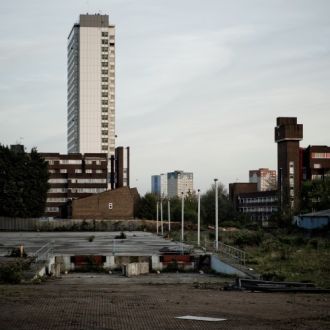Thomas C. Frohlich, 24/7 Wall St., USA Today
image from article
The U.S. population grew by 0.79% last year, just slightly faster than the previous year’s growth rate but still among the slowest rates in decades.
According to the U.S. Census Bureau , the number of Americans living in metropolitan areas rose to 275.3 million in 2015, an increase of 2.5 million. While urban areas on the whole are growing, the population of several metro areas shrank last year. Over the last five years, the populations of 23 metros declined by more than 2%. By contrast, the U.S. population increased by 3.9% over that time.
People need to leave a metropolitan area in order for its population to decline. However, these areas are shrinking also because they are failing to attract new migrants. With only a few exceptions, all of the fastest shrinking metro populations declined primarily as a result of net migration.
Jobs are perhaps the single most important driver of urban expansion. The relatively weak job markets and low income levels in these 20 shrinking areas mean there are likely fewer economic opportunities, which would attract new residents and encourage current residents to stay. The unemployment rate in every one of these areas exceeds the national jobless of 5% in January 2016. The average income is also lower than the national per capita income of $47,615 in all 20 metros.
Of the 20 fastest shrinking metro areas, half are in the rust belt — the central U.S. region characterized by its decaying industrial base and population loss. Many of these urban areas are still heavily dependent on manufacturing. The percentage of the workforce employed in manufacturing is greater than the national proportion of 10.3% in 12 of the 20 areas.
These cities also tend to have older populations. Migrants tend to be younger in general, so this could mean these areas are not as attractive to Americans most likely to relocate. The birth rate also tends to be lower in places with older populations.
In all but two of these 20 areas, the percentage of residents 65 and older exceeds the national proportion of 14.5%. Nationwide and in most U.S. areas, births are far more likely to outpace deaths. In nine of the 20 fastest shrinking metro areas, however, the population decrease from deaths was greater than the population increase from births over the last five years.
Based on recently released U.S. Census Bureau estimates, 24/7 Wall St. reviewed population changes in the 381 U.S. metropolitan statistical areas from July 2010 through July 2015. Poverty rates, educational attainment rates, and workforce composition came from the Census Bureau’s 2014 American Community Survey . Data on incomes and price levels as of 2014 and 2010, respectively, are from the Bureau of Economic Analysis . Unemployment rates are for January 2016, and annual unemployment rates for 2010 and 2014 are from the Bureau of Labor Statistics . Metro area GDP per capita income are from the Bureau of Economic Analysis and are in 2010 dollars.
These are America’s fastest shrinking cities:
1. Farmington, NM
> Population growth (2010-2015): -8.76%
> Total population: 118,737
>Per capita income : $36,197
> Unemployment rate: 7.8%
> Total population: 118,737
>
> Unemployment rate: 7.8%
Farmington’s population shrank by 8.8% over the last five years, faster than any other metro in the country. As is common in the nation’s shrinking cities, Farmington has a relatively high violent crime rate and relatively low incomes. There are approximately 535 violent crimes per 100,000 area residents, well above the national rate of 366 incidents per 100,000 people. The area’s annual per capita income of $36,197 is also well below the $47,615 income of the average American.
2. Pine Bluff, AR
> Population growth (2010-2015): -6.38%
> Total population: 93,696
> Per capita income: $30,986
> Unemployment rate: 6.4%
> Total population: 93,696
> Per capita income: $30,986
> Unemployment rate: 6.4%
Pine Bluff’s violent crime rate of 685 incidents per 100,000 residents — nearly the highest of U.S. metro areas — likely deters prospective residents and has likely contributed to the region’s exodus. Over the last five years, 7,062 more people left the area than arrived. This accounted for the entirety of Pine Bluff’s 6.4% population decrease. Area residents are also not wealthy. Pine Bluff’s per capita income of $30,986 is nearly the lowest of all U.S. metros.
3. Johnstown, PA
> Population growth (2010-2015): -4.92%
> Total population: 136,411
> Per capita income: $37,536
> Unemployment rate: 6.7%
> Total population: 136,411
> Per capita income: $37,536
> Unemployment rate: 6.7%
Like in only a few U.S. metro areas, there were more deaths than births over the last five years in Johnstown, Pennsylvania . However, it was outward migration that drove the area’s population decline of 4.9% over that period. Nearly 5,000 more people left Johnstown than arrived in the last five years. Johnstown is part of the rust belt — areas once heavily dependent on manufacturing.
4. Sierra Vista-Douglas, AZ
> Population growth (2010-2015): -4.08%
> Total population: 126,427
> Per capita income: $36,720
> Unemployment rate: 6.6%
> Total population: 126,427
> Per capita income: $36,720
> Unemployment rate: 6.6%
Over the last five years, the number of people living in the Sierra Vista-Douglas area shrank by nearly 5%, the fourth worst decline in the country. Many parts of Arizona, which was hit especially hard during the housing crisis, still have weak economies. In the Sierra Vista-Douglas area, 6.6% of the workforce is unemployed, one of the highest annual unemployment rates nationwide. The rate is down considerably from previous years, however.
5. Flint, MI
> Population growth (2010-2015): -3.34%
> Total population: 410,849
> Per capita income: $34,878
> Unemployment rate: 5.5%
> Total population: 410,849
> Per capita income: $34,878
> Unemployment rate: 5.5%
Nearly 20,000 more people left than arrived to Flint over the last five years, driving the area’s population loss of 3.3%. The area’s once robust manufacturing industry is no longer attracting the employers, or the young, prospective employees indicative of a healthy economy. The industry employs 16.2% of the city’s workforce, one of the highest percentages.




No comments:
Post a Comment